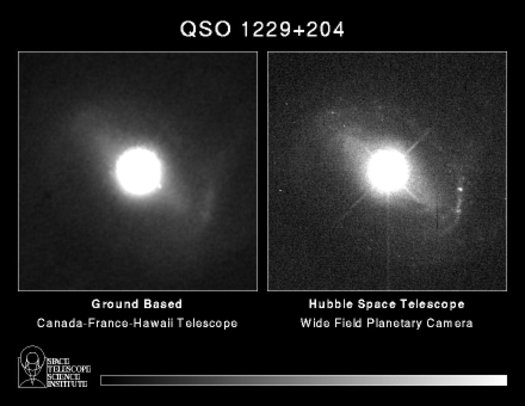The most widely accepted notion is that quasars are in galaxies with active, supermassive black holes at their centers. However, because of their enormous distance, the `host' galaxies appear very small and faint, and are very hard to see against the much brighter quasar light at the center.
Earlier ground based images (on the left below) showed what appeared to be a fuzzy form extending from around the bright quasar, QSO 1229+204.

From the HST Press Release:
The new, spaced-based HST image more clearly shows that the quasar
lies in the core of a galaxy that has a common shape consisting of
two spiral arms of stars connected by a bar-like feature.
Hubble reveals that an extended blue feature on one side of
the galaxy is really a string of knots, which are probably massive young
star clusters. The star clusters were most likely formed
as a result of a collision between the host galaxy and a small gas-rich
companion.